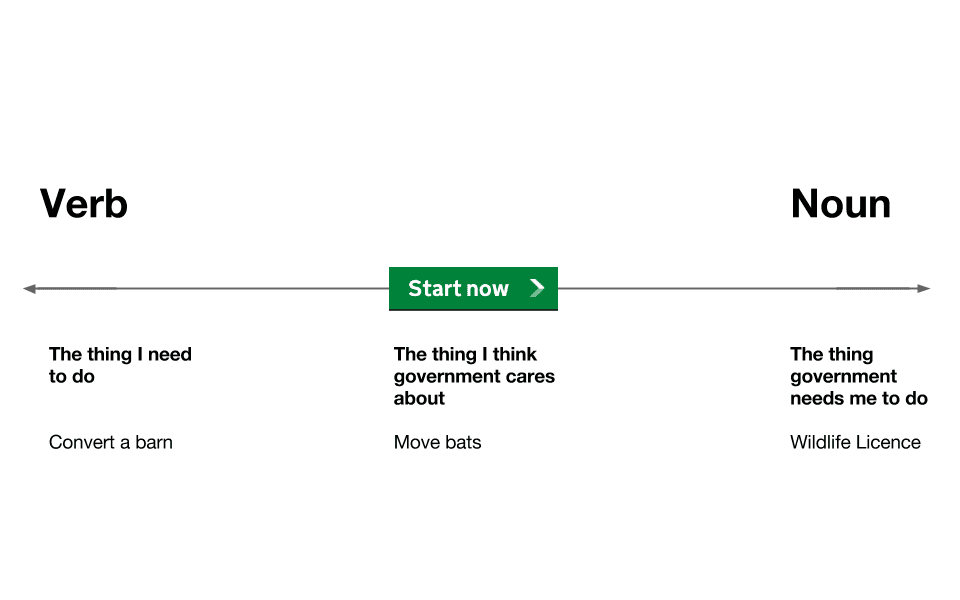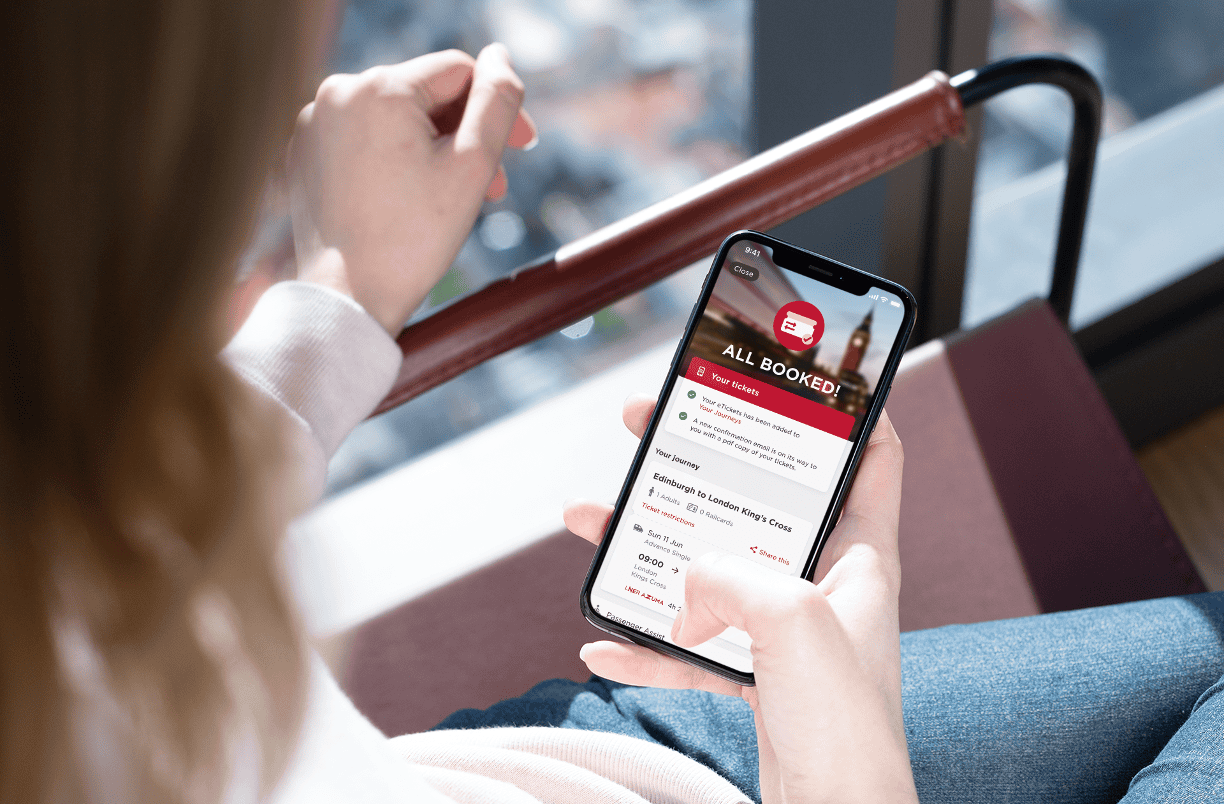
Think about the things you can do in society, as you go about your life. How many of them can you do without interacting with an organisation, website, product, information sticker, or person that helps you do it?
Everything from healthcare, to getting around, to the things you do in your free time, is enabled by services. Chances are, they’re the single biggest factor in determining whether (and how well) you can do these things – and increasing numbers of them demand at least some interaction with a digital channel. This could be a website, online form, live chat, or anything else that requires a computer or smartphone.
Why it’s important to ensure your service isn’t digital-only
With this growing reliance on digital services, it’s essential for anyone designing, building and maintaining them to ensure everyone can use their services. And this means thinking beyond digital.
Service designers must aim to provide the same benefits and quality through non-digital channels, as they do digitally. Admittedly, this isn’t easy, and may even seem at odds with what a digital service provider is striving to do.
But it’s essential, because if we choose to design only for digital, those who aren’t capable of or comfortable using digital channels could be denied access to these services altogether. This could mean denying them access to the means to earn a living, education, healthcare, emergency funds, or other information and statutory resources that can improve their quality of life.
Choosing the better path is the right thing to do, and below, we’ve set out five steps to help you make your digital or hybrid services better for everyone.
What is a service?
Before we do, however, what’s the difference between a service and a product?
Where products enable people to perform tasks, services help them achieve goals. This means a service must give consideration to the full journey from the moment an individual realises they have a need, to the point when that need is met. Crucially, services must take responsibility for ensuring the individual succeeds in achieving their goal(s).
Good services are often hard to notice unless you’re looking for them, and should require no prior experience to use. They guide us towards and enable us to achieve a well-understood end-goal.
A product, on the other hand, typically demands some level of knowledge or training to enable someone to perform a task. While products can have a definitive (and marketable) purpose, there’s often a lot more freedom in what you can use a product for and how you can use it to meet a variety of needs. It relies on you to decide these things.
So let’s now explore five key areas to think about as you create your digital or hybrid services.
1. Start with the goals, and everything else follows
When you’re designing a service, begin the process by investigating who has a need that you want to design for. What are their lives like? What are their motivations? What do they need to make happen, change, or learn?
This process can highlight a lot of areas you feel you could help with. Start with just one challenge or goal, based on where your research suggests you can deliver the most benefit, and where you’re well-placed to help. Put the others in a prioritised backlog.
Once you’ve established who and what your focus is, brainstorm some ideas (with these people, if possible) of how you might intervene. Illustrate and walk through the steps service users will need to take, both digitally and beyond. Where possible, prototype your ideas to see them in action. Don’t be afraid to discard or re-imagine. Once you have a shortlist of promising ideas, you can start thinking about what you need to build to facilitate this overall experience.
2. Name your service clearly
It may seem obvious, but good services make clear what they do – from the user’s perspective. The service name should start with a verb, and avoid using jargon or domain-specific language that could make it hard to find.
For example, the UK government runs a ‘Register to vote service’, not an ‘Electoral register service’.

Image from ‘Good services are verbs, bad services are nouns’ blog, used under the Open Government License v3.0. Additional heading by Softwire.
3. Think end-to-end about what people will need
As we touched on above, service designers need to think about the full journey someone will go on to achieve their goal.
How does someone find your service? When they find it, how do they know they’re in the right place? What are the next steps? And what happens if they need help?
A good way to answer many of these questions proactively is to include a story on your service’s front page, along the following lines:
- This service is for people who <have a particular problem>
- It will enable you to <address the problem in the following way>
- You’ll need <certain knowledge or tools>
- You’ll be asked to <perform these actions>
- It will take <about this long>
- If you get stuck, you can get help by <calling this number, emailing this address, or speaking to someone at this location at these times>
4. Think front-to-back, from users to staff to systems
Your service will be made up of more than just the user experience and interfaces that people interact with. To borrow an analogy from Sarah Drummond’s SofaConf 2020 session, this is just the tip of the iceberg.
Many other factors influence the experience someone has of your service. These include the infrastructure underpinning it, the business processes it forms part of, the back-office systems handling the data, the applications used by the contact centre someone can call if they have a problem, and the incentives that drive people’s behaviour.
System maps and service blueprints are useful tools for capturing and visualising how all these components interact with, influence, and depend on one another.
5. Make sure it works for everyone
Lastly, and most importantly, a good service works for everyone, regardless of:
- Who you are (e.g. gender fluid, BIPoC, neurodiverse)
- What you have (e.g. education, wealth, accommodation)
- What you know (e.g. digital skills, legal terms, subject jargon)
This of course includes disabled people. It’s reported that around one in five people in the UK is disabled. As well as having a moral and ethical responsibility to ensure no one is excluded, there are also legal responsibilities for service creators and providers, including under the Equality Act 2010 and the Public Sector Bodies Accessibility Regulations 2018.
To learn more about designing accessible digital services, you can listen to the digital accessibility episode of Softwire’s Techtalks podcast.
And remember, the steps you take to make your service accessible by those who face the greatest difficulties when attempting to use it, will make it better for everyone.
Where you can learn more
To learn more about service design, I’d recommend Lou Downe’s book, Good Services, as a must-read for anyone involved in creating services that aim to help – and take responsibility for – people achieving their goals.


